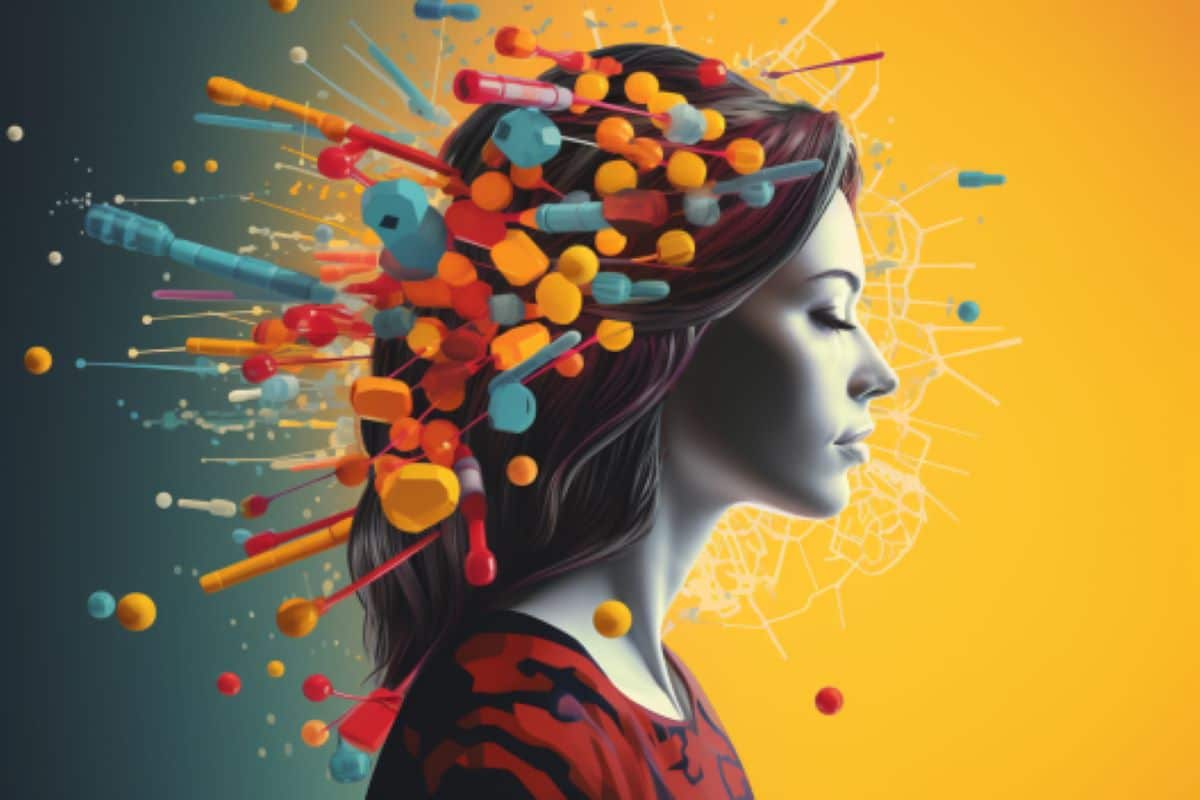Summary: Researchers unveiled the brain’s ability to prioritize needs over wants using the dopamine reward system.
This study, observing a male zebra finch’s shift from quenching thirst to courting when faced with a female, sheds light on the flexible nature of the dopamine system.
The finding not only broadens our comprehension of dopamine’s role in complex behaviors but could also guide the evolution of artificial intelligence systems.
Key Facts:
- The brain’s dopamine system can dynamically adjust to prioritize between competing needs.
- A novel technique involving optical recording and an engineered virus allowed researchers to observe dopamine levels for extended periods, leading to this discovery.
- When a lonely and thirsty male zebra finch sees a female, his dopamine system adjusts, and his focus shifts from drinking water to courting the female.
Source: Cornell University
While many studies have investigated the neuroscience behind how an animal learns to achieve a goal, such as obtaining water when thirsty, none have understood how animals choose between several competing needs – until now.
A Cornell University-led study, published Sept. 27 in the journal Nature, used advanced techniques developed by researchers to track the brain’s dopamine reward system and found – for the first time – this system flexibly retunes toward the most important goal when faced with multiple competing needs.
In the study, when a lonely and thirsty male zebra finch encountered a female, his thirst waned and he instead focused his attention on her, a shift reflected in the dopamine system.
Along with expanding our understanding of how dopamine neurons and pathways influence complex behavior, the finding may also inform the development of new artificial intelligence systems that mimic neural networks and dopamine reward systems.
“What we did that was new, to my knowledge, is that we were less interested in how an animal achieves a given objective and more interested in what happens when multiple objectives are on the table,” said Jesse Goldberg, associate professor of neurobiology and behavior and senior author of the study.
For more than a century, researchers have been studying relationships between dopamine and learning. Dopamine neurons fire in response to rewards meeting diverse needs such as hunger, thirst, loneliness, language, and song learning, to name a few. Upon receiving a reward, such as water when thirsty, dopamine neurons exhibit a burst in activity. All drugs of addiction work through this system, Goldberg said.
Researchers developed a technique using optical recording methods and an engineered virus. Genes in the virus drove the expression of fluorescent dopamine sensors, such that the tissue fluoresced in proportion to dopamine levels. Optical fibers placed in the brain were then able to measure dopamine levels rising and falling as birds sang songs, courted females, and drank water.
While a previous system using electrodes let researchers measure dopamine signals for up to 30 minutes, this new method allowed them to measure neuron activity for up to four hours straight over weeks.
“It was a key technical advance that enabled the discovery,” Goldberg said.
In experiments, Goldberg and colleagues isolated male zebra finches, which are social animals, and also made them thirsty. The male had been trained to recognize that a flashing light meant it could peck a spout and get a drink, and when the bird was alone, the cue triggered both a large dopamine signal and water retrieval. But when the female was added to the cage, the male ignored the cue and the dopamine signal ceased.
“It’s kind of intuitive, but hadn’t explicitly been shown before, that courtship reduces the need for thirst,” Goldberg said.
“And that’s important because in a complex and natural environment priorities change as new opportunities arise.” The shift was reflected in both the bird’s behavior and in the dopamine signal, he said.
Researchers say learning centers of the brain dynamically retune on moment by moment timescales, as an animal changes its priorities in response to new opportunities in the environment.
Funding: The study was funded by the National Institutes of Health.
About this dopamine and neuroscience research news
Author: Abby Shroba Kozlowski
Source: Cornell University
Contact: Abby Shroba Kozlowski – Cornell University
Image: The image is credited to Neuroscience News
Original Research: Closed access.
“Dopaminergic error signals retune to social feedback during courtship” by Jesse Goldberg et al. Nature
Abstract
Dopaminergic error signals retune to social feedback during courtship
Hunger, thirst, loneliness and ambition determine the reward value of food, water, social interaction and performance outcome. Dopamine neurons respond to rewards meeting these diverse needs, but it remains unclear how behaviour and dopamine signals change as priorities change with new opportunities in the environment.
One possibility is that dopamine signals for distinct drives are routed to distinct dopamine pathways. Another possibility is that dopamine signals in a given pathway are dynamically tuned to rewards set by the current priority.
Here we used electrophysiology and fibre photometry to test how dopamine signals associated with quenching thirst, singing a good song and courting a mate change as male zebra finches (Taeniopygia guttata) were provided with opportunities to retrieve water, evaluate song performance or court a female.
When alone, water reward signals were observed in two mesostriatal pathways but singing-related performance error signals were routed to Area X, a striatal nucleus specialized for singing.
When courting a female, water seeking was reduced and dopamine responses to both water and song performance outcomes diminished. Instead, dopamine signals in Area X were driven by female calls timed with the courtship song.
Thus the dopamine system handled coexisting drives by routing vocal performance and social feedback signals to a striatal area for communication and by flexibly re-tuning to rewards set by the prioritized drive.








